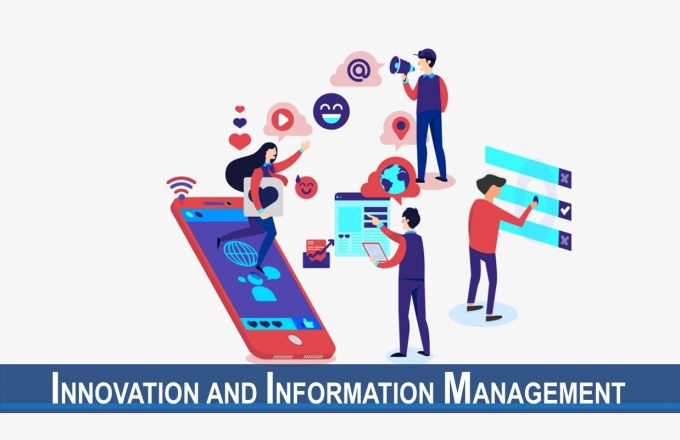A common problem in econometrics, statistics, and machine learning is to estimate and make inference on functions that satisfy shape restrictions. For example, distribution functions are nondecreasing and range between zero and one, height growth charts are nondecreasing in age, and production functions are nondecreasing and quasi-concave in input quantities. We propose a method to enforce these restrictions ex post on generic unconstrained point and interval estimates of the target function by applying functional operators. The interval estimates could be either frequentist confidence bands or Bayesian credible regions. If an operator has reshaping, invariance, order-preserving, and distance-reducing properties, the shape-enforced point estimates are closer to the target function than the original point estimates and the shape-enforced interval estimates have greater coverage and shorter length than the original interval estimates. We show that these properties hold for six different operators that cover commonly used shape restrictions in practice: range, convexity, monotonicity, monotone convexity, quasi-convexity, and monotone quasi-convexity, with the latter two restrictions being of paramount importance. The main attractive property of the post-processing approach is that it works in conjunction with any generic initial point or interval estimate, obtained using any of parametric, semi-parametric or nonparametric learning methods, including recent methods that are able to exploit either smoothness, sparsity, or other forms of structured parsimony of target functions. The post-processed point and interval estimates automatically inherit and provably improve these properties in finite samples, while also enforcing qualitative shape restrictions brought by scientific reasoning. We illustrate the results with two empirical applications to the estimation of a height growth chart for infants in India and a production function for chemical firms in China.
1 Aug 2021
Journal of Machine Learning Research
我们研究美国散户投资者如何通过社交传播财经新闻和投资意见。我们首先找出一系列会导致某些投资者进行异常交易的外生事件。基于这些事件,我们追踪投资者的交易行为,尤其是被这些事件影响投资者的邻居。这样样本选择有利于我们研究投资行为在左邻右舍之间的「传染性」。结合流行病学的方法,此研究的情景设置让我们可以估算传讯速率,以及它如何随着潜在投资者群体的特征而变化。
August 2021
Journal of Financial Economics
研究团队收集来自 61 个经济体,合共超过6700间公司的数据,评估企业特质与股票收益表现,以及新冠疫情个案之间的关联性。研究发现,尽管新冠疫情导致股票收益减少,但某些企业录得的跌幅较为轻微,而这些企业具有以下特质:在 2020 年前公司的财务状况较好(如拥有较多现金和未提取的信贷额、较少的总债务和短期债务,以及维持较高的利润水准)、全球供应链和客户地点受新冠疫情影响较小,积极推动企业社会责任的活动,以及较少地位稳固的高管人员。此外,家族企业(尤其是家族直接控股和雇佣职业经理人的家族企业)、大企业或政府控制的企业的股票回报表现较佳,而由对冲基金和其他资产管理公司大量投资的公司则表现逊色。在疫情期间,股票市场给予拥有较低管理层所有权的企业正面评价,却给予拥有较高管理层所有权的企业负面评价。
August 2021
Journal of Financial Economics
The telegraph was introduced to China in the late 19th century, a time when China also saw the rise of modern banks. Based on this historical context, this paper documents the importance of information technology in banking development. We construct a data set on the distributions of telegraph stations and banks across 287 prefectures between 1881 and 1936. The results show that the telegraph significantly expanded banks’ branch networks in terms of both number and geographic scope. The effect of the telegraph remains robust when we instrument it using proximity to the early military telegraph trunk.
August 2021
Journal of Financial Economics
员工可能会通过减少某些工作,暗中学习哪些工作较为重要,并以这些数据来更有效地于未来减少工作。 利用长期雇佣关系的模型,我们归纳了在员工学习减少工作的情况下,制定最佳契约的特征,并分析如何通过管理表现衡量系统,以激发雇员工作动力。 我们研究了两项相关政策:间歇性替换现有措施以及采用新措施。 尽管出现学习减少工作的情况,但最佳契约是不变的,并且可能涉及随机替换/采用的策略,以令员工难以掌握学懂钻制度空子的信息。
1 Jul 2021
The Review of Economic Studies
机构时常依赖同侪绩效评级来分析雇员在工作上独特且难以被察觉的贡献。尽管此举行之有效,然而同侪之间会出现对受评人评级的准确度及资讯效用的差异。在此研究中,我们建立且测试的理论显示,评核者的社交网络地位能有系统地解释上述差异。根据讯息处理理论,我们假设在社交网络中占据核心(外围)位置的成员可获更多(更少)有关受评人的表现的第一及第二手资讯,这与准确的绩效评级关联性更强(较弱)。为了在互相关联的场景设置下取得「真实」的绩效表现评分,我们采用外部标准比较方法作为我们的论点的基准参数。这样,既定的绩效预测指标(即受评人的一般心理能力 [GMA] 和责任心)和同侪绩效评级的有效性系数会增强,从而反映社交网络核心(外围)成员更准确(准备度较低)的评级。在研究一中,我们使用一家技术初创公司的机构网络去研究核心及外围成员对受评人绩效方面的GMA有效性系数。于研究二中,我们尝试在团队网络中复制及延伸研究一的结论,并使用受评人的责任心作为基准指标。两项研究结果均支持上述假设,即核心社交网络成员比外围成员提供更清楚、更准确的同侪绩效评级。
July 2021
Journal of Applied Psychology
We propose and estimate a quantitative model of exchange rates in which participants in the foreign exchange market are intermediaries subject to value-at-risk (VaR) constraints. Higher volatility translates into tighter VaR constraints, and intermediaries require higher returns to hold foreign assets. Therefore, the foreign currency is expected to appreciate. The model quantitatively resolves the Backus–Smith puzzle, the forward premium puzzle, and the exchange rate volatility puzzle and explains deviations from the covered interest rate parity. Moreover, the model implies both contemporaneous and predictive relations between proxies of leverage constraint tightness and exchange rates. These implications are supported in the data.
July 2021
Journal of Financial Economics
通过分析中国各地监管政策力度的变化和中国企业的地理分布,我们研究了政府外部监管对国有企业绩效的影响。该研究利用结构化的分析方法,使用常用的企业级别生产数据,估算出企业的生产率和中间投入品价格。研究显示,加强外部监管是提高企业治理的关键,可大幅消减中间投入品的采购价格并大幅减少生产管理中的懈怠现象。结果表面,政府监管可以成为改善国有企业绩效的有效政策工具。
June 2021
The Economic Journal
In social networks, social foci are physical or virtual entities around which social individuals organize joint activities, for example, places and products (physical form) or opinions and services (virtual form). Forecasting which social foci will diffuse to more social individuals is important for managerial functions such as marketing and public management operations. In terms of diffusive social adoptions, prior studies on user adoptive behavior in social networks have focused on single-item adoption in homogeneous networks. We advance this body of research by modeling scenarios with multi-item adoption and learning the relative propagation of social foci in concurrent social diffusions for online social networking platforms. In particular, we distinguish two types of social nodes in our two-mode social network model: social foci and social actors. Based on social network theories, we identify and operationalize factors that drive social adoption within the two-mode social network. We also capture the interdependencies between social actors and social foci using a bilateral recursive process—specifically, a mutual reinforcement process that converges to an analytical form. Thus, we develop a gradient learning method based on a mutual reinforcement process that targets the optimal parameter configuration for pairwise ranking of social diffusions. Further, we demonstrate analytical properties of the proposed method such as guaranteed convergence and the convergence rate. In the evaluation, we benchmark the proposed method against prevalent methods, and we demonstrate its superior performance using three real-world data sets that cover the adoption of both physical and virtual entities in online social networking platforms.
June 2021
MIS Quarterly























